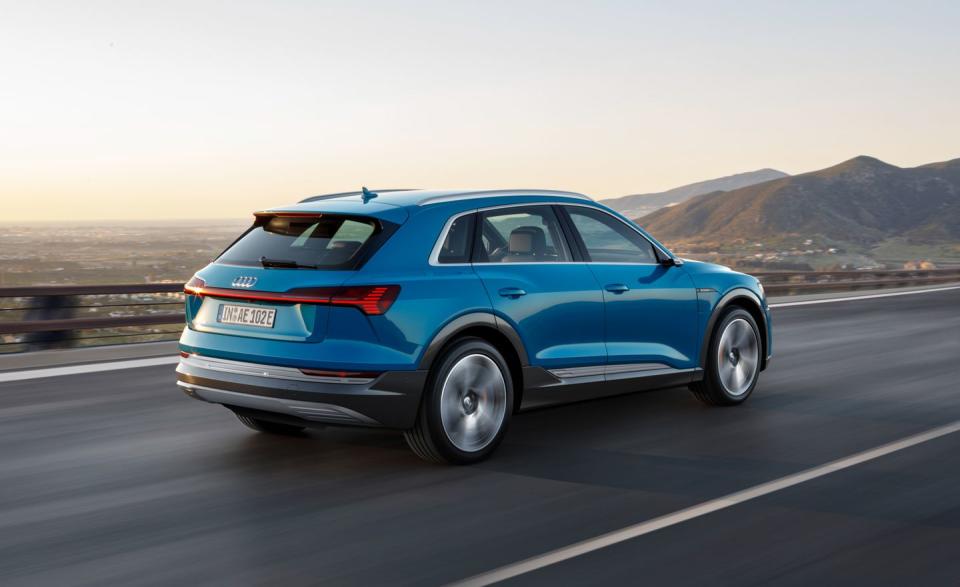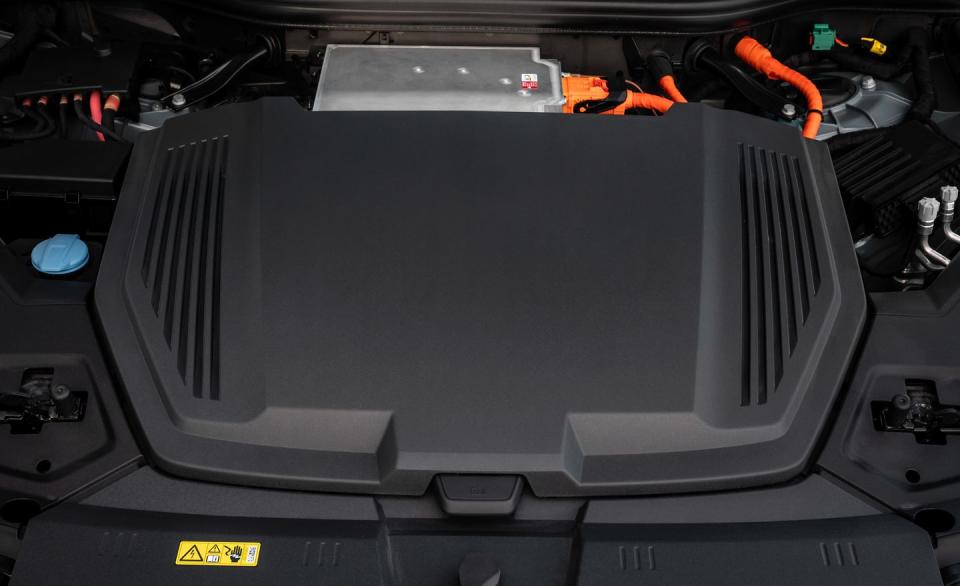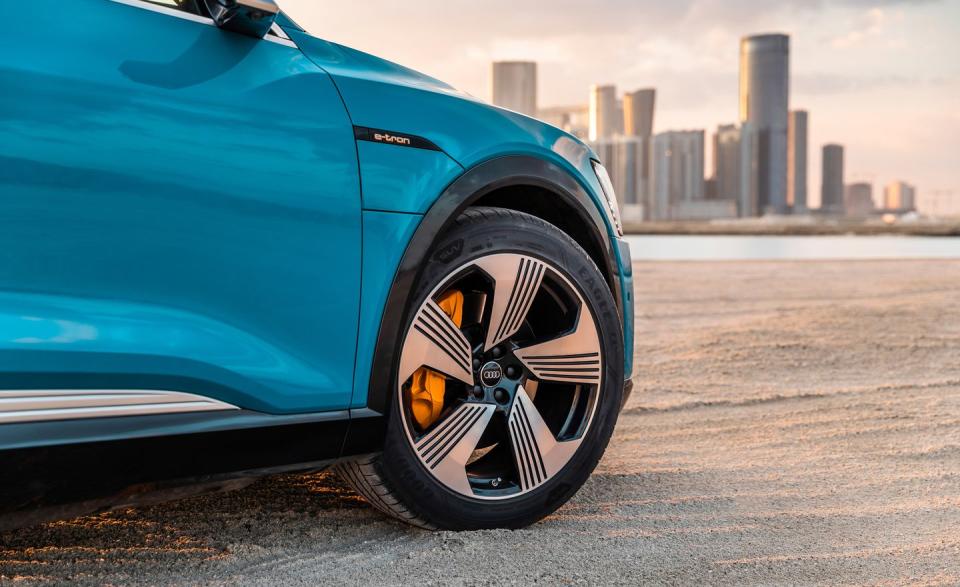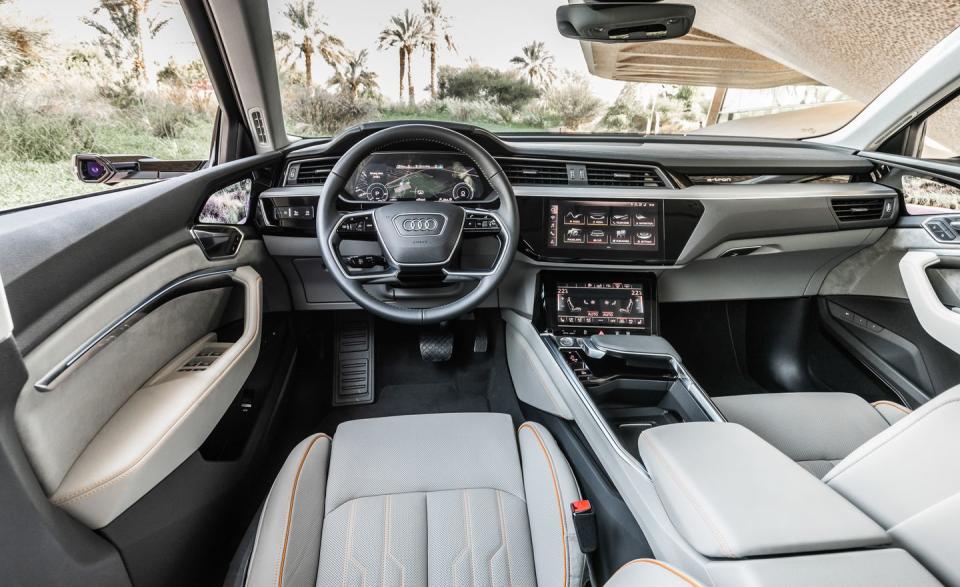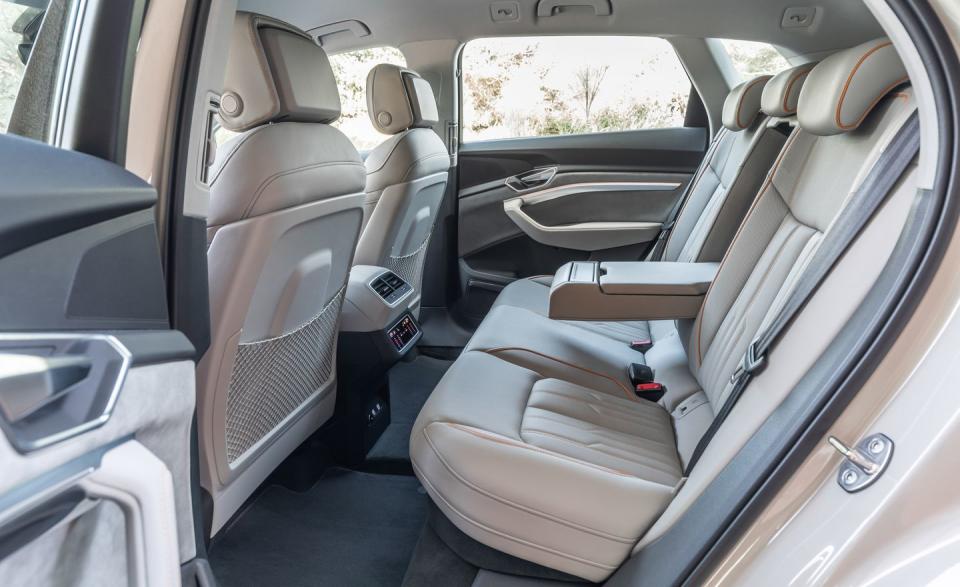The 2019 Audi e-tron Is the Anti-Tesla EV
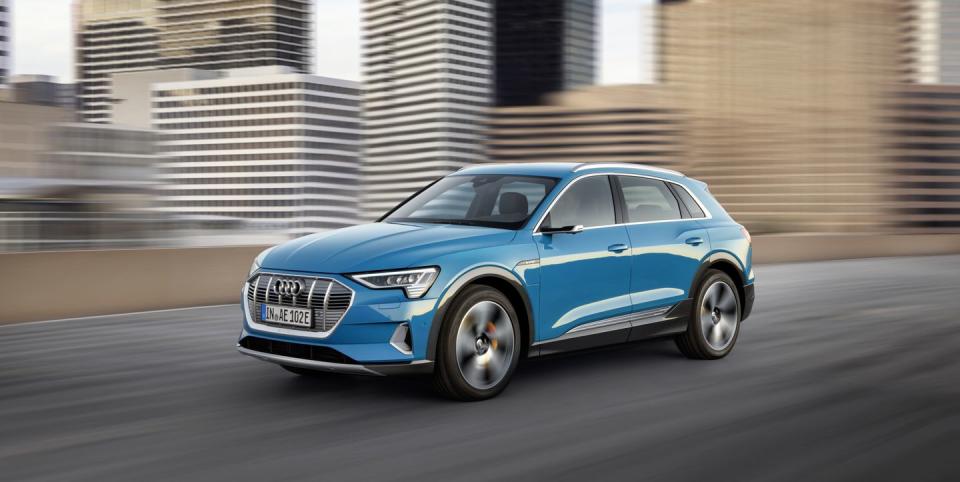
It seems odd at first, to be driving the all-electric 2019 Audi e-tron in the oil-rich Middle East. But even the United Arab Emirates, a country smaller than Maine sitting on 6 percent of the world's oil reserves, can't avoid the clean-energy future. Within a few decades, the UAE's near-bottomless oil wells could be as valuable as a basement full of AOL free-hours floppy disks. As a sign of the changing times, the country that currently gets 98 percent of its energy from fossil fuels is in the midst of constructing the two largest solar power plants in the world.
That creates a fitting parallel with Audi's first mass-produced electric vehicle. Audi's parent company, the Volkswagen Group, is one of the world's largest automakers. Virtually all of the 10.5 million vehicles it sold in 2017 are powered by fossil fuels, and a costly, low-volume EV program such as this won't improve the company's bottom line anytime soon. But just as the Stone Age didn't end because humans ran out of stones, the oil-powered economy will run dry before the wells do. The Audi e-tron is a bet, a prediction of what comes next.
If it foreshadows the future, the e-tron is also very much of the moment. Electric motors drive the front and rear axles, a 1543-pound array of lithium-ion battery cells rides beneath the floor, and a mid-size SUV wrapper casts it into the thickest part of the luxury auto market. In a couple of years' time, the e-tron will be just one offering in this fully formed electro-ute segment, with entrants from Tesla, Jaguar, BMW, Mercedes-Benz, and possibly even startup Rivian. Audi is not talking about EPA range just yet (more on that later), but we suspect the $75,795 e-tron will earn an estimate just north of 200 miles. So it won't revolutionize the electric-range game. It won't revolutionize the idea of an Audi, either. Even as Audi electrified the heart of this SUV, it left the brand's character fully intact. The e-tron looks like an Audi, drives like an Audi, and, hell, even sounds like an Audi.
The Anti-Tesla
The decision to hew close to Audi's established design language and familiar vehicle attributes should ease the transition from gas to electrons for the brand's current customers. It also makes the e-tron the anti-Tesla of sorts. Whereas driving a Tesla is the strongest anti-establishment statement six figures can buy, the e-tron suggests a more natural evolution for our current automotive institutions.
In the e-tron, there are no Spaceballs Easter eggs or accompanying Ludicrous acceleration. The Audi's front motor puts out 168 horsepower and 182 lb-ft of torque while the rear contributes another 188 ponies and 232 lb-ft. It won't leave you breathless, but the e-tron takes off with the authority and immediacy we've come to expect from electric cars. Moving the gear selector from Drive to Sport increases output of the front motor by 13 horsepower and 46 lb-ft, with the rear unit adding 33 ponies and 30 lb-ft to its total, but only for eight-second stints. Push through the kick-down detent at the bottom of the accelerator to access that power, and the so-called Boost mode is said to trim almost a full second from the zero-to-60-mph run. We predict a 5.6-second dash to 60 mph for the 5500-pound e-tron in this mode-quick, but not radically so.
Built on a unique architecture, the e-tron borrows many of its bolt-on components from the Volkswagen Group's MLB Evo platform. It rides on air springs and adaptive dampers that provide nicely controlled body motions. The UAE's roads, as smooth as the wind-swept landscape, look as if they were paved yesterday and offer few opportunities to evaluate the ride quality. But flung down a washboard dirt road at 45 mph, the e-tron easily sopped up the harshness. Over a short hill climb, the handling proved as predictable and resolute as any Audi's, with front-end grip washing out long before the rear end ever threatens to let go. A brake-by-wire system skillfully blends up to 0.30 g of regenerative braking with the electrohydraulically assisted friction brakes while steering-wheel-mounted paddles toggle through three levels of liftoff regenerative braking.
In the tradition of Audi's internal-combustion models, the e-tron's cabin is wonderfully serene at speed. As wide, flat, and empty as the desert that they cut through, the highways surrounding Abu Dhabi offer speed limits that occasionally stretch beyond 87 mph to 99 mph. Even at those velocities and by the standards established by earlier EVs, the e-tron is a tomb. An acoustically insulating windshield and side glass and extensive underbody insulation block the din of wind and road noise that would otherwise fill the acoustic void created by the absence of an internal-combustion engine. More impressive, Audi has all but eliminated the high-frequency whine that's common in EVs during acceleration. The e-tron's motors are encapsulated inside polyurethane boxes and mounted to the subframes through rubber bushings (the rear subframe is also rubber-isolated from the body structure) to isolate noise and vibration.
The cabin is also a modern, high-tech wonder. With the same MMI Touch Response system used in the Q8 and Audi's large cars, a pair of pressure-sensitive haptic-feedback touchscreens control nearly everything outside of steering, braking, and accelerating. The digital instrument cluster can be filled with Google Earth navigation. Because the e-tron falls between a Q5 and a Q7 in exterior length, it offers ample rear-seat space for two adults to comfortably outlast the battery's range.
The Known Unknown: Range
At the time of our test drive, Audi would say only that the e-tron will exceed 248 miles of range on Europe's optimistic WLTP test. Engineers and marketers wouldn't speculate on a U.S. EPA estimate, but that won't stop us from doing so. Consider the Jaguar I-Pace, an architecturally similar vehicle with front and rear motors totaling 394 horsepower and a 90.0-kWh battery built from lithium-ion cells supplied by LG Chem, the same supplier Audi uses. Jag's I-Pace rates at 234 miles by EPA methodology and 292 miles on the WLTP cycle. Applying a similar percentage loss for the e-tron and assuming Audi doesn't drastically overshoot its 248-mile WLTP promise, we expect an EPA range slightly above 200 miles, a relatively small number considering the big battery pack. What gives?
For one, Audi uses just 81.0 kWh of the e-tron's 95.0-kWh capacity. Every automaker leaves a buffer to protect the longevity of the pack, but Audi appears characteristically conservative here. Jaguar pushes its smaller battery harder, using 84.7 kWh of the I-Pace's 90.0-kWh capacity. Then there's the question of efficiency, an advanced calculus of aerodynamic drag, friction, and losses via the electronics and battery management system. Like the I-Pace before it, we anticipate, the e-tron's EPA range will add to the evidence that, underneath the hype, Tesla actually does hold a technical advantage in stretching more miles from its electrons. The Model X 100D, which is larger and heavier than the e-tron, extracts 295 miles of EPA range from its 100.0-kWh pack.
Audi's Advantages
Tesla remains unchallenged in ultimate range and electric acceleration, but this Audi carries advantages in far less sexy aspects. With more than 100 years of car-building experience, Audi has strengths where Tesla has blind spots. The e-tron rolls out of the Brussels, Belgium, factory that previously built the Audi A1 with all the experience and purchasing power of the world's largest automaker. Accordingly, the e-tron exhibits the typical Audi build quality. When deliveries start in the United States in spring of 2019, the car will be sold and serviced by Audi's national network of 304 dealers. The battery will be backed by an eight-year warranty-effectively an EV standard at this point-but should something fail, your local dealer's service department will have the ability to replace any of the 36 battery modules rather than the entire pack.
On AC power, the e-tron can recharge at up to 11 kilowatts, which will allow it to add mileage more quickly than the slow-charging Jaguar I-Pace with its 7-kW charger. How that translates into a miles-per-hour-of-charging figure will have to wait until there's something more official from Audi or the EPA. There's also standard 150-kW DC fast-charging capability, and while such charging stations are thin on the ground currently, we expect to see them multiply with the growth of Electrify America, the EV-infrastructure company seeded with $2 billion as part of the Volkswagen Group's emissions-cheating settlement. In the U.S., the e-tron features a charging port on each side of the vehicle, with both located on the front fenders; the driver's side is for AC charging and DC fast charging, while the passenger side is only for AC charging. (Curiously, in Europe, the second charging port is an option.) European e-trons also can also be equipped with cameras in place of side-view mirrors, but these will be kept from our market due to U.S. regulations. While the conventional mirrors do increase the e-tron's drag coefficient, we found the camera's small screens in the doors to be awkwardly positioned.
Three EV SUVs
Between the Tesla Model X, the Jaguar I-Pace, and the Audi e-tron, the luxury electric utility segment now offers three distinct characters. The Tesla is the futurist, breaking unspoken rules and pushing lithium-ion battery technology to its limits. Jaguar builds the driver's choice, a forward-looking design with sports-sedan moves. With the e-tron, Audi presents the traditionalist. Sure, it delivers the modern styling and bleeding-edge infotainment Audi is known for, but this is as close as an electric vehicle comes to the traditional luxury-car experience. For buyers who continue to be skeptical of battery-electric technology, the e-tron has the best chance of being the oil that greases the transition from gas vehicles to EVs.
('You Might Also Like',)

 Yahoo Autos
Yahoo Autos 